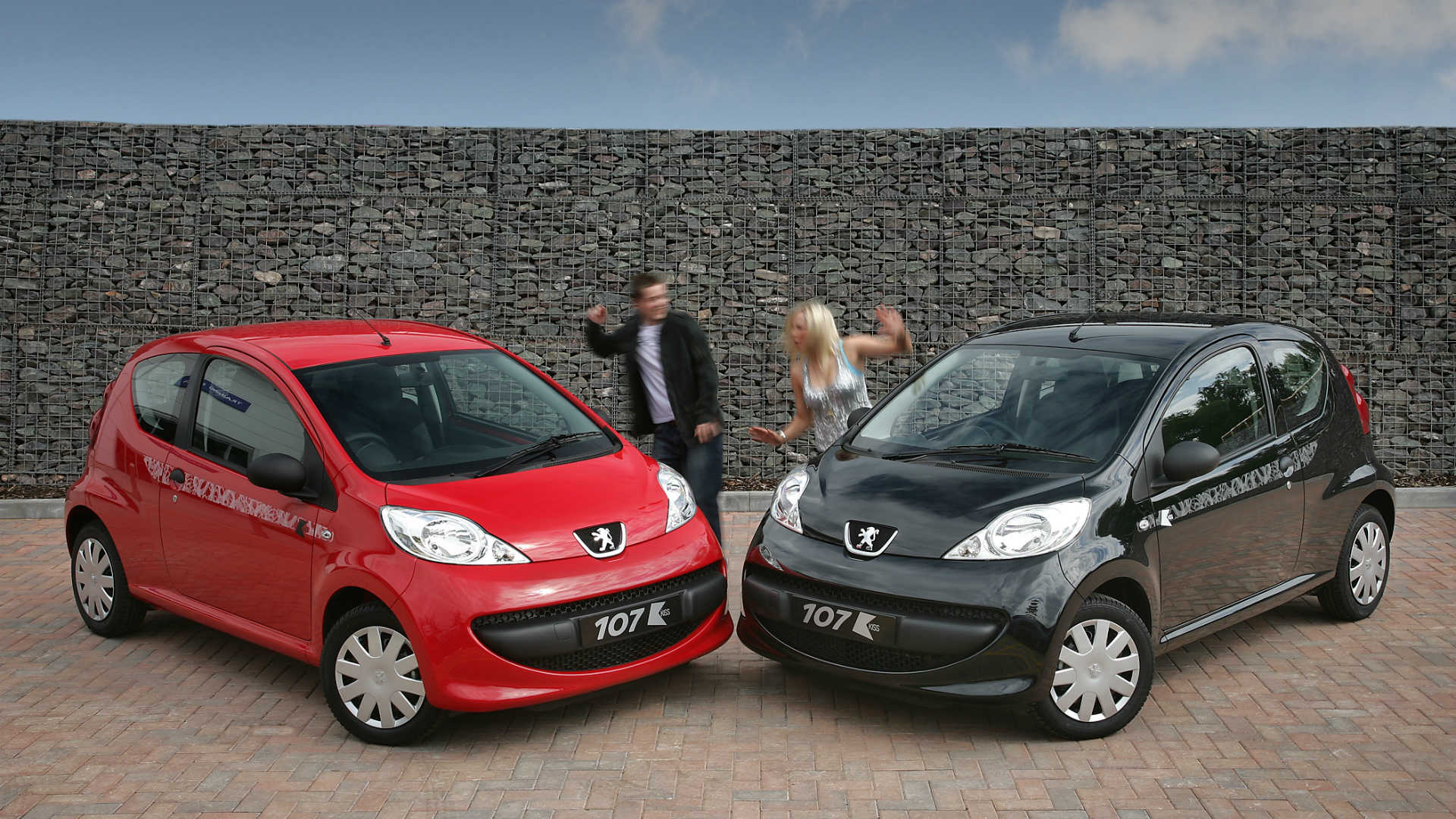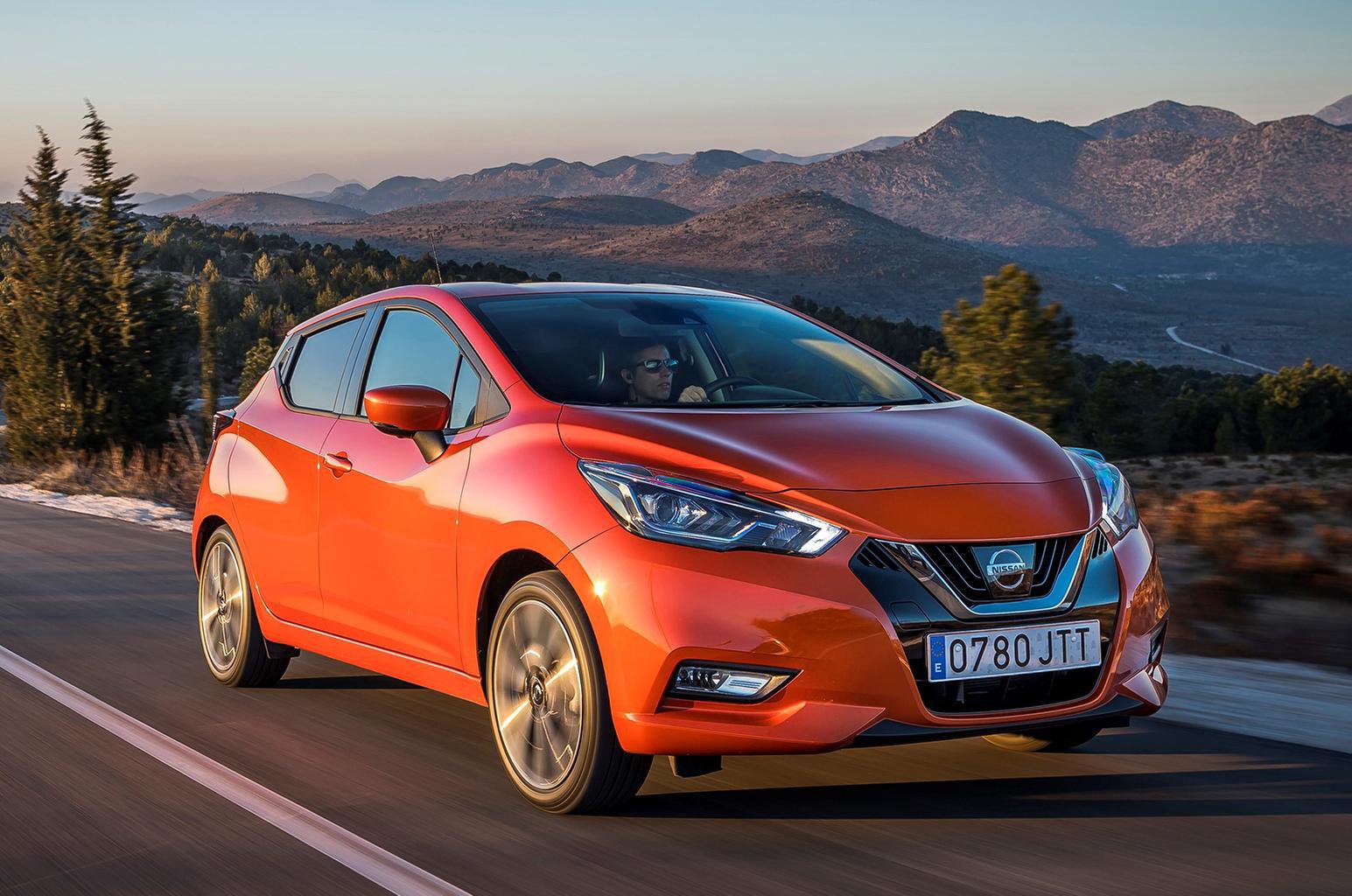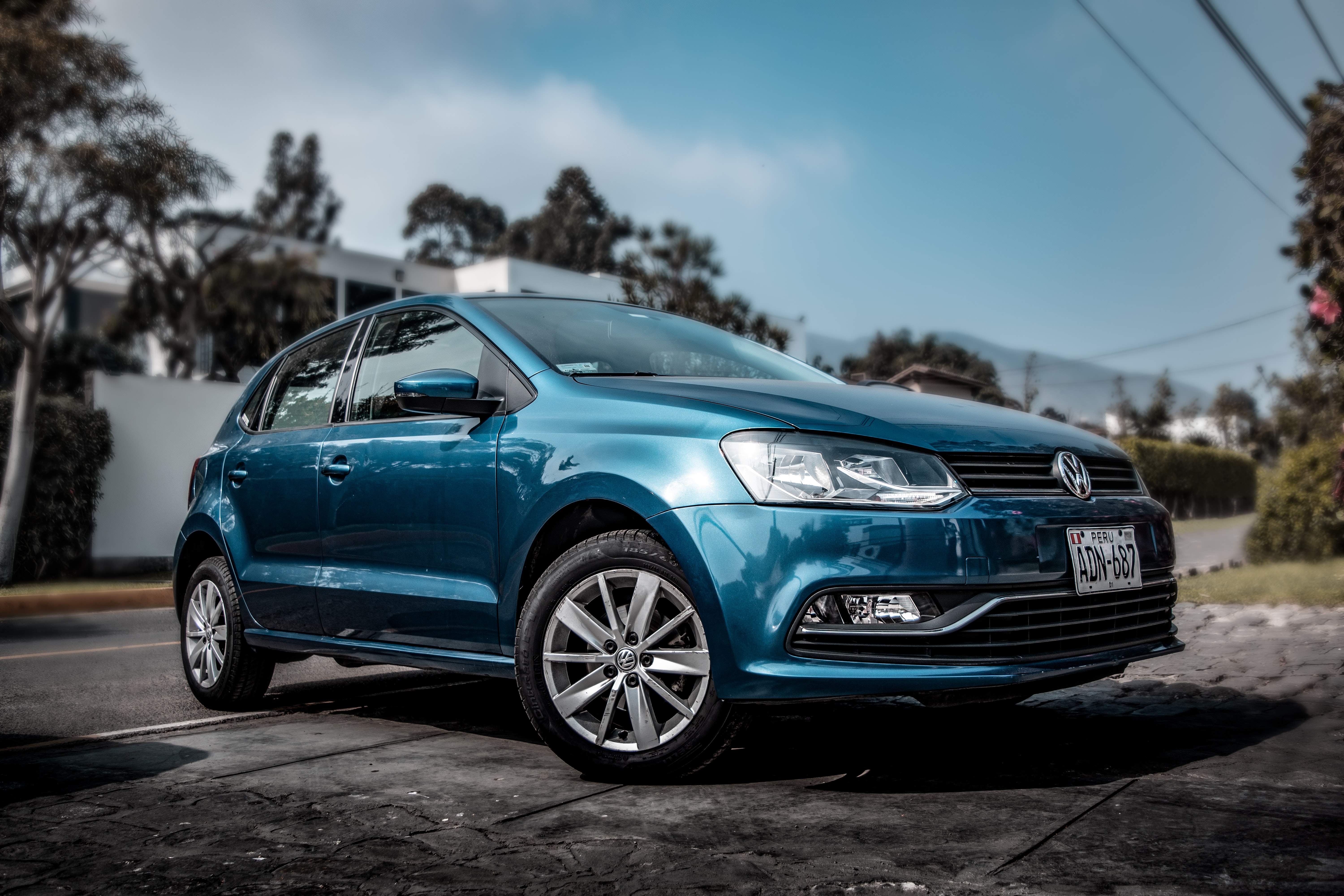Cheapest Cars To Insure - Navigating Affordability
Discover the budget-friendly side of car ownership with insights into the 'cheapest cars to insure.' Explore factors influencing insurance rates, top picks for low-cost vehicles, and practical tips for securing affordable coverage. Make informed decisions to balance your transportation needs with a wallet-friendly approach to car insurance.
Author:Luqman JacksonReviewer:Liam EvansDec 29, 20233.9K Shares61.3K Views

Owning a car is a necessity for many, but the associated costs can add up quickly. One significant expense is car insurance, and finding an affordable option can make a substantial difference in your overall budget. In this guide, we'll delve into the world of car insurance and explore some of the cheapest cars to insure, providing insights into what factors contribute to lower insurance costs and how you can make a well-informed decision when purchasing your next vehicle.
The average motorist will pay between $1,121 and $1,190 per year for complete coverage on one of these vehicles. According to the Insurance Information Institute, the average car insurance rate for all vehicles is $1,588 per year. As a result, driving one of the automobiles on this list could result in significant savings.
Before you start looking for a new vehicle, it's a good idea to know which automobiles are the cheapest and most expensive to insure. The monthly insurance rate is something you should factor into your budget, and you may acquire quotations from insurance companies before you buy to ensure you stay within your budget.
Factors Affecting Car Insurance Rates By Model - Decoding The Cost Equation
When exploring the realm of the cheapest cars to insure, it's crucial to understand the intricate web of factors that influence car insurance rates. Insurers take a multifaceted approach to assessing risk, and various elements come into play when determining the cost of insurance coverage. Here, we delve into the key factors that significantly impact car insurance rates.
Vehicle Type And Model
The type of vehicle you drive is a pivotal factor in shaping your car insurance rates. Insurers evaluate the make and model of your car, considering elements such as its safety features, repair costs, and overall risk profile. Generally, smaller and less powerful cars tend to have lower insurance premiums compared to larger, more high-performance vehicles.
Safety Features
The safety features incorporated into your vehicle can have a substantial impact on insurance rates. Cars equipped with advanced safety technologies, such as anti-lock brakes, airbags, electronic stability control, and collision warning systems, are deemed safer, leading to lower premiums. Insurers often encourage the use of safety features that mitigate the risk of accidents and reduce the severity of injuries.
Repair Costs
The cost of repairing your vehicle is a critical consideration for insurers. Cars with lower repair costs typically translate to lower insurance premiums. Vehicles that use widely available and affordable replacement parts can be more cost-effective to repair, reducing the financial risk for insurance providers.
Theft Rates
The likelihood of a car being stolen is a significant risk factor for insurers. Models with lower theft rates generally qualify for lower insurance premiums. Vehicles equipped with anti-theft devices and those statistically less attractive to thieves contribute to a lower overall risk, resulting in more affordable insurance coverage.
Driver's Record
Your personal driving history plays a central role in determining insurance rates. Insurers assess factors such as past accidents, traffic violations, and claims history to gauge your risk level as a driver. A clean driving record, free of incidents, signals to insurers that you are a responsible and low-risk driver, leading to lower premiums.
Location
The location where you primarily drive and park your vehicle is a factor that insurers consider. Urban areas with higher rates of accidents, theft, and vandalism may lead to higher insurance premiums compared to suburban or rural locations. Your geographic location contributes to the overall risk assessment, influencing the cost of insurance coverage.
Understanding these factors provides valuable insights into why certain cars are deemed more affordable to insure than others. When in the market for a new vehicle, considering these elements can empower you to make choices that not only align with your preferences but also contribute to lower insurance costs.
How Vehicle Choice Affects Insurance Rates?
Certain types of vehicles consistently rank as more affordable to insure, aligning with the factors mentioned above. Here's a closer look at how different vehicle characteristics can impact insurance rates:
- Small and Compact Cars - Smaller cars often come with lower insurance premiums due to their reduced risk of damage in accidents. Their compact size and lighter weight contribute to lower repair costs, making them more economical to insure.
- Safety Ratings - Vehicles with high safety ratings tend to qualify for lower insurance premiums. Safety features such as airbags, anti-lock brakes, and advanced collision avoidance systems contribute to a safer driving experience, reducing the overall risk in the eyes of insurers.
- Low-Theft Risk - Cars with lower theft rates are considered less risky to insure. Factors such as built-in security features, location-based anti-theft devices, and models that are less appealing to thieves contribute to a reduced likelihood of theft, translating to lower insurance costs.
- Fuel Efficiency - Fuel-efficient cars, often smaller and more streamlined, can have lower insurance costs. Their reduced environmental impact and smaller engines contribute to lower risk and repair costs, factors that insurers take into account when determining premiums.
- Low Repair Costs - Vehicles with affordable and widely available replacement parts are generally less expensive to insure. Insurers consider the cost of repairs when assessing risk, and cars with lower repair costs are deemed more budget-friendly in terms of insurance coverage.
While the type of vehicle you choose is a significant influencer, it's essential to recognize that these factors interact in a complex manner. For example, a small car with a high safety rating and low repair costs might be particularly advantageous in terms of insurance affordability.
Top Picks For The Cheapest Cars To Insure
Since 2020, the cost of purchasing a new automobile has soared, while used vehicle prices have begun to reduce since their peak in 2021. With inflation being high and car insurance premiums growing to keep up, you may be wondering if inexpensive car insurance might assist offset some of these rising costs.
While switching vehicles to get cheaper auto insurance may appear to be a radical step, it may be a realistic one, especially if you're already in the market for a new or new-to-you ride.
Based on our analysis of average rates for 27 vehicle brands and models, we have identified the ten cheapest automobiles to insure in 2023. In comparison, the national average cost of auto insurance for full coverage is $2,014 per year.
| Subaru Outback | $1,603 |
| Honda CR-V | $1,635 |
| Honda Pilot | $1,726 |
| Ford Escape | $1,734 |
| Honda Odyssey | $1,735 |
| Ford F-150 | $1,753 |
| Jeep Wrangler | $1,820 |
Cheapest Cars To Insure By Vehicle Type
Finding a vehicle with low average insurance rates is one thing, but it ignores your individual requirements. Perhaps you want a fuel-efficient car to lessen your carbon impact, an SUV with storage for mountain bikes and camping equipment, or a truck to haul lumber for yard and house chores.
You can find affordable auto insurance no matter what type of vehicle you choose, even if it takes a little extra digging. The cheapest vehicles to insure are shown below, divided into cars, SUVs, and trucks.
But keep in mind that "cheap" is a relative phrase. In addition to personal characteristics that may influence insurance rates, such as age, gender, location, credit score, and driving record, each vehicle has unique rating criteria that affect insurance premiums, such as the cost of parts and labor and the probability of an accident occurring. Here is a list on BankRate.
Cheapest Cars To Insure
| Honda Civic | $1,963 |
| Toyota Camry | $2,014 |
| Toyota Prius | $2,117 |
| Nissan Altima | $2,189 |
| Dodge Challenger | $2,483 |
Cheapest SUVs To Insure
| Subaru Outback | $1,603 |
| Honda CR-V | $1,635 |
| Honda Pilot | $1,726 |
| Ford Escape | $1,734 |
| Honda Odyssey | $1,735 |
Cheapest Trucks To Insure
| Ford F-150 | $1,753 |
| GMC Sierra | $1,867 |
| Chevrolet Silverado 1500 | $1,989 |
| Toyota Tundra | $2,064 |
| Nissan Titan | $2,285 |
Tips For Securing Affordable Car Insurance - A Roadmap To Savings
Navigating the complex landscape of car insurance can be challenging, especially when you're on the hunt for the cheapest cars to insure. While the type of vehicle you choose plays a significant role, there are proactive strategies you can employ to secure the cheapest cars to insure. In this guide, we'll explore a roadmap to savings, offering insights and tips to help you make informed decisions and optimize your insurance costs.
Maintain A Clean Driving Record
Your driving record is a direct reflection of your risk as a driver in the eyes of insurers. Keeping a clean driving record, free of accidents, traffic violations, and insurance claims, is the foundational step toward securing affordable car insurance. Safe driving habits not only contribute to your safety on the road but also position you as a low-risk driver, which insurers reward with lower premiums.
Bundle Insurance Policies
Many insurance companies offer discounts for customers who bundle multiple policies. Consider combining your auto insurance with other policies, such as home or renter's insurance, to maximize your savings. Bundling not only simplifies your insurance management but can also lead to substantial discounts, making it a cost-effective strategy for securing comprehensive coverage.
Increase Deductibles
Opting for a higher deductible is a strategic way to fine-tune your insurance premiums. By agreeing to pay a higher amount out of pocket in the event of a claim, you can enjoy lower monthly premiums. However, it's crucial to strike a balance between affordability and your ability to cover the deductible if needed. Assess your financial situation and choose a deductible that aligns with your budget.
Take Advantage Of Discounts
Insurers offer a range of discounts that can significantly reduce your insurance costs. Inquire about available discounts, such as:
- Safe Driver Discounts -Rewards for maintaining a clean driving record.
- Good Student Discounts -Savings for students with high academic achievements.
- Defensive Driving Course Discounts -Incentives for completing defensive driving courses.
- Military Discounts -Special rates for active-duty military personnel and veterans.
- Multi-Vehicle Discounts -Savings for insuring multiple vehicles under the same policy.
Uncovering these hidden savings opportunities requires proactive communication with your insurance provider. Don't hesitate to ask about available discounts and explore how they can be applied to your policy.
Shop Around
Don't settle for the first insurance quote you receive. The insurance market is competitive, and rates can vary significantly among providers. Take the time to shop around and compare quotes from different insurance companies.
Consider both large insurers and local providers, as each may have unique offerings and pricing structures. Harnessing the power of comparison allows you to make an informed decision that aligns with both your coverage needs and budget constraints.
Maintain Good Credit
Your credit score can silently impact your car insurance rates. Many insurance companies use credit scores as a factor in determining premiums. Maintaining good credit demonstrates financial responsibility and can contribute to lower insurance costs. Pay bills on time, manage your credit responsibly, and periodically review your credit report to ensure its accuracy.
Consider Usage-Based Insurance
Usage-based insurance programs offer a personalized approach to premium calculation. Instead of relying solely on historical factors, these programs use real-time data gathered from your driving habits. If you're a safe and infrequent driver, consider opting for a usage-based insurance policy. By paying for what you drive, you can potentially enjoy lower rates that accurately reflect your driving behavior.
Drive A Safe Vehicle
The type of vehicle you choose not only influences insurance rates but can also contribute to your safety on the road. Prioritize safety features when selecting a car, as vehicles with high safety ratings often qualify for lower insurance premiums. Advanced safety technologies, such as collision avoidance systems, anti-lock brakes, and airbags, not only reduce the risk of accidents but also position you as a safer driver in the eyes of insurers.
Implementing these tips requires a proactive and strategic approach to managing your car insurance. By combining multiple strategies and tailoring them to your unique circumstances, you can create a comprehensive plan for securing affordable coverage without sacrificing the quality of protection.
Cheapest Cars To Insure FAQs
How Do Insurance Companies Determine Car Insurance Rates?
Insurance companies consider factors like the car's make and model, safety features, repair costs, theft rates, driver's records, and location to determine insurance rates.
Are Smaller Cars Generally Cheaper To Insure?
Yes, smaller cars often have lower insurance premiums due to factors such as reduced repair costs and lower risk of accidents.
What Are The Best Strategies For Securing Affordable Car Insurance?
Strategies include maintaining a clean driving record, bundling insurance policies, increasing deductibles, taking advantage of discounts, shopping around, and considering usage-based insurance.
How Does The Safety Rating Of A Car Affect Insurance Costs?
Cars with high safety ratings often qualify for lower insurance premiums as they are perceived as safer and pose a lower risk of injury.
Are There Discounts Available For Good Student Drivers?
Yes, many insurance companies offer discounts for good student drivers as a way to encourage safe driving habits among younger policyholders.
What Are The Advantages Of Choosing A Fuel-efficient Car In Terms Of Insurance Costs?
Fuel-efficient cars, often smaller in size, can have lower insurance costs due to factors like reduced repair expenses and improved safety features.
Is It True That Newer Cars Are Less Expensive To Insure?
Because newer automobiles are more expensive to replace, insurance premiums are generally higher. This isn't always the case, especially if the modern car is less expensive to fix or replace than an older vehicle.
Conclusion
Choosing one of the cheapest cars to insure is a practical and savvy approach to managing your overall transportation costs. The key is to strike a balance between a vehicle that meets your needs, aligns with your budget, and comes with insurance rates that won't break the bank.
Understanding the factors that influence insurance premiums and incorporating smart strategies, such as maintaining a clean driving record and taking advantage of discounts, can further empower your budgeting efforts. Whether you opt for a compact SUV, a fuel-efficient sedan, or a family-friendly minivan, there are numerous affordable options that cater to a wide range of preferences and lifestyles.
By combining the right vehicle choice with proactive insurance management, you can enjoy the benefits of car ownership without the financial burden. Remember to periodically review your insurance coverage, especially when considering a new vehicle, to ensure that you continue to make informed and cost-effective choices for your automotive needs.
Jump to
Factors Affecting Car Insurance Rates By Model - Decoding The Cost Equation
How Vehicle Choice Affects Insurance Rates?
Top Picks For The Cheapest Cars To Insure
Cheapest Cars To Insure By Vehicle Type
Tips For Securing Affordable Car Insurance - A Roadmap To Savings
Cheapest Cars To Insure FAQs
Conclusion

Luqman Jackson
Author

Liam Evans
Reviewer
Latest Articles
Popular Articles

